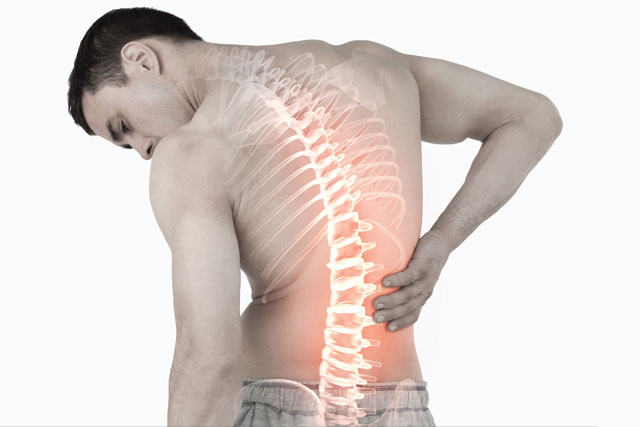
Chronic Back Pain: Diagnosis & Treatment
Did you know one in five Australians are living with chronic pain?
Neurosurgeon and Spinal Surgeon Dr Michael Wong and his patient Silvana Loschiavo who was a chronic back and neck pain sufferer before her surgery, visit Weekend Today to discuss the diagnosis and treatment of chronic pain.
There are many stages of chronic pain and treatment options depend on the core issue. Here we are outlining treatment option for different stages. however one of the most fundamental things is finding a health care provider who can help you navigate through this difficult time.
How hard is it to treat and diagnose chronic pain?
Chronic pain is pain which persists for an extended period of time, it can last anywhere from weeks to years in some cases. Usually, in the case of back/spinal chronic pain, there was an initial injury that took place causing damage, however, often other injuries or issues can extend out as a result of the original issue.
Alot of chronic pain conditions are not being properly managed and often the right information isn’t getting to the patients. It’s unfortunate because a lot of the time, correct treatment after the initial injury can prevent the pain from turning chronic and being an issue for an extended period of time. Chronic pain is the #1 reason most people go to see their doctor.
Silvana had a bulging disc which was compressing on her nerves which was really affecting her legs, making it difficult to walk and she was in constant pain. Silvana tried many things; she had rehab on her back initially, then a cortisone injection in her back with no success. Six months prior to her surgery, Silvana ended up in hospital because she couldn’t feel her legs and it became obvious something needed to happen, and quickly.
Silvana underwent surgery and noticed the difference straight away after surgery. She previously had shooting pains down her legs and after surgery, she didn’t have that anymore.
I have recently injured myself, where is the best place to start?
Common sense is the best approach. The first thing to do after injury is just have a good rest, take a few days off and take some simple medication like paracetamol or ibuprofen to mitigate the pain and decrease inflammation. Stay away from all lifting, bending and exercise at this stage. In most cases, this can fix simple back pain or injuries. Unfortunately, most people don’t take the adequate rest required after an injury occurs which can make it very difficult for the injury to heal properly.
If you are at this stage of injury, read our article ‘I Hurt My Back: What Should I Do?‘ for the best first steps.
If that doesn’t work, what are the next steps?
The next practical step is starting some simple therapy such as physiotherapy, acupuncture or massage. Money and persistence invested here may help you to avoid further injury, complications or even surgery down the track. Always be sure to select the right therapist for your needs, as you don’t want to aggravate the injury in the wrong way.
Gentle non-impact exercise like gentle swimming, cycling and especially Pilates can be extremely beneficial in strengthening the area around the injury. This supports the injury to heal quicker and ensures blood is moving, and the body is functioning properly.
We highly recommend seeing a recommended professional who can provide guidance as to the types of exercises you should or should not do and treat the injury at the source, something that is hard to do at-home. This can require persistence and discipline to see a professional regularly and to ensure you do the recommended exercises daily or as required. It can feel tedious but it is vital in strengthening the area without inflaming the injury.
When is a spinal cortisone injection the best option?
When rest and simple exercise is not helping, a spinal injection can be very helpful. A nerve root block enables the doctor to determine exactly which nerve root or roots are affected. An epidural injection works by decreasing swelling and pressure on larger nerves and the spine.
A cortisone injection can help to alleviate pain and decrease inflammation which allows patients to rest easier and regain some movement in the problem area. This healing time alone can be enough to resolve the injury and subside the pain for good.
Often patients come in with a history of back pain and if the cause is minor it responds well to spinal injections because it relieves inflammation from the nerve or joint.
Firstly you need to have the proper scan and the correct diagnosis to clearly ascertain the cause of the back pain at which point your professional can recommend a cortisone injection.
At what point do you go for surgery and how complicated is that surgery?
From a common sense approach, having tried to rest with simple pain medication and gentle exercise, and the injection, then the next step, given the correct diagnosis, then surgery can be very effective in removing the source of pain.
The surgery depends upon the injury, it’s severity, the patients general health and many other factors. Technological innovations have drastically improved the effectiveness and invasiveness of surgery.
Common treatable back pain includes nerve compression, disc prolapses and fractures to the spine. These make up a large portion of injuries where surgery is the appropriate treatment.
Dr Wong suggests seeking multiple expert opinions when it comes to a delicate procedure as a more experienced surgeon could be the difference between resolving the issue for good and not.
Some people that have found surgery ineffective are now looking at cognitive behavioural therapy, can this work?
One needs to recognise that not every patient is as lucky as Silvana in that she had the correct treatment and therefore removed the source of pain. In some cases if the surgery has not alleviated the pain in it’s entirety, cognitive therapy or psychological therapy can help them to deal with the chronic condition. This type of on-going therapy can help patients to live normal lives even while experiencing chronic pain.
Is pain mind over matter? Cognitive therapy has been used for depression but can it really help alleviate physical pain?
If you can’t resolve the physical pain, you are going to have to bear with it for a long time, then the psychological support therapy is a very important part of the treatment.
After turning to surgery, Silvana says “things are much better, I have got movement. I have two young kids and I can spend quality time with them. Because I have had a second surgery on my neck, I have got residual muscular pain from that. Things are much much better, because I had lost sensation in my hands and my arms, so things are heaps better.”
Are lifestyle choices a factor in chronic back pain?
Lifestyle is a factor yes, but also as we age we can see back pain as a simple result of huge changes to the body. The most important thing is long-term management of our spinal health and avoiding injury, therefore prolonging our longevity in many ways.






